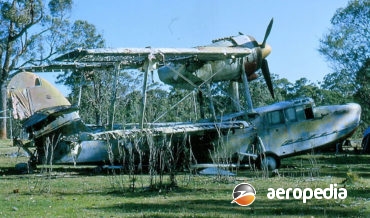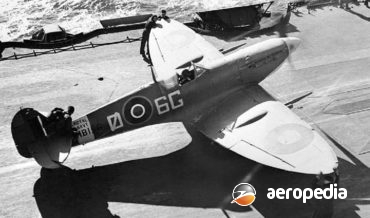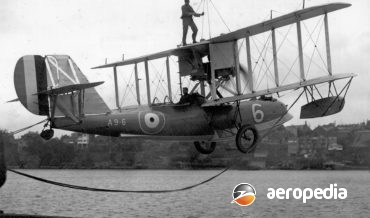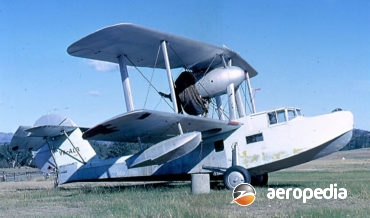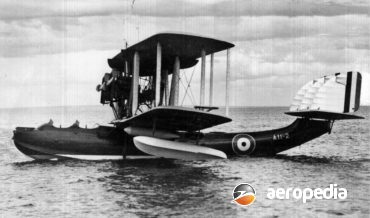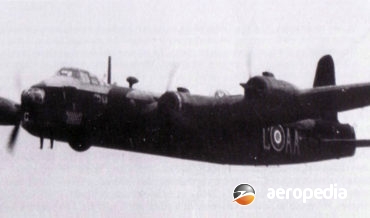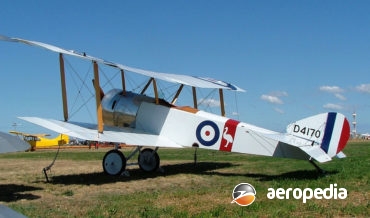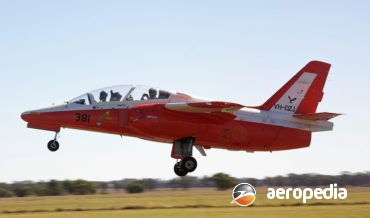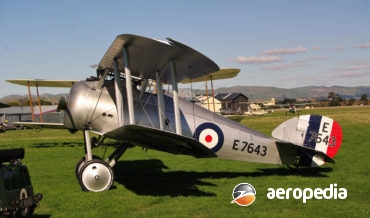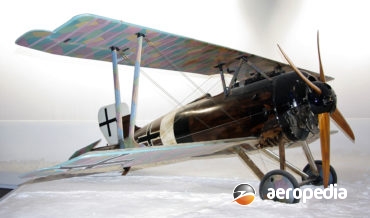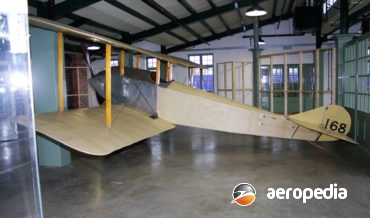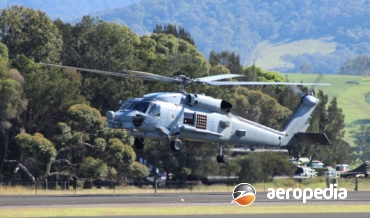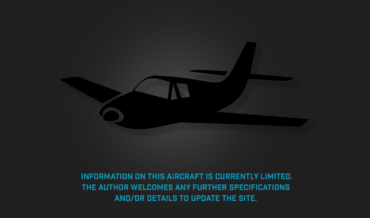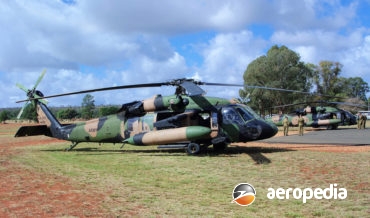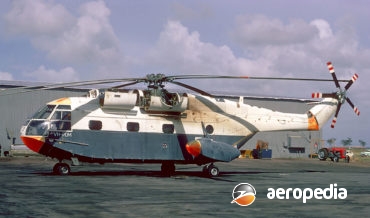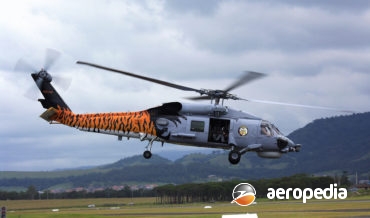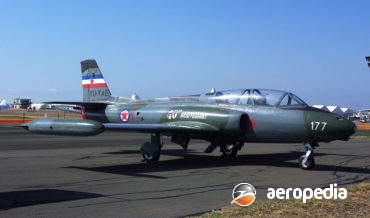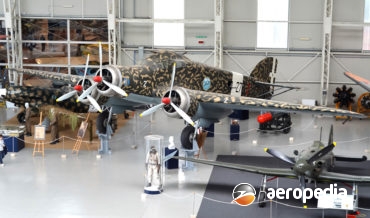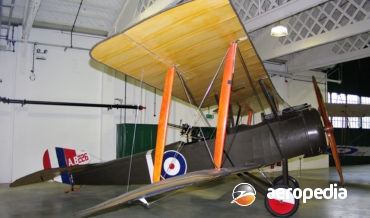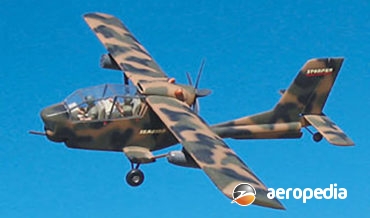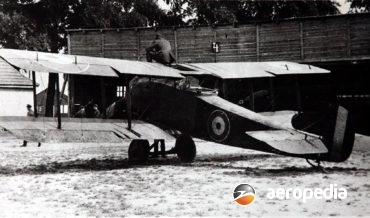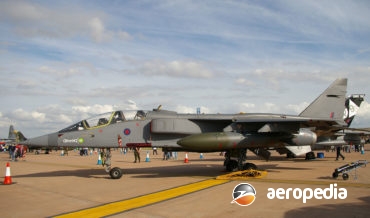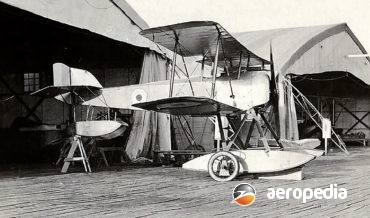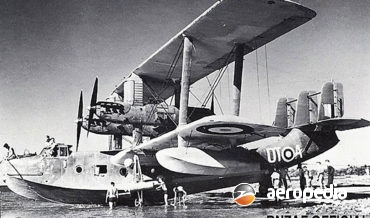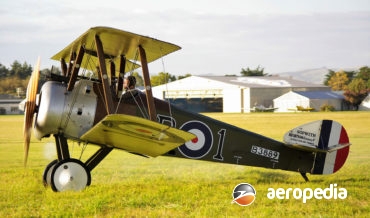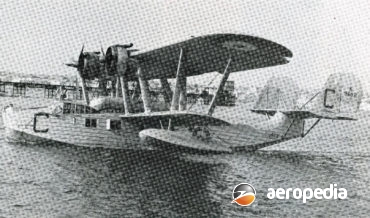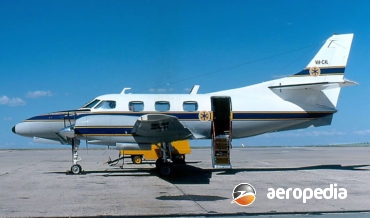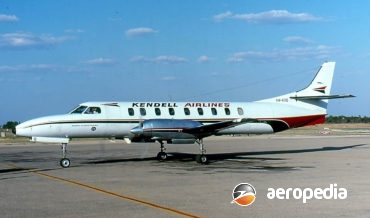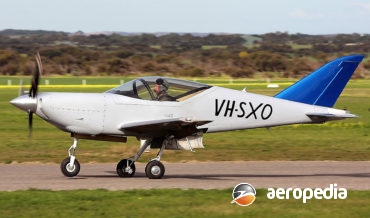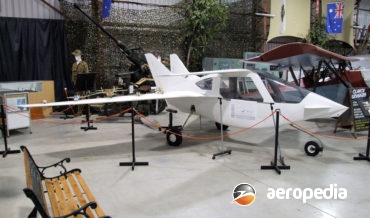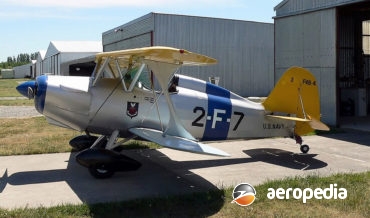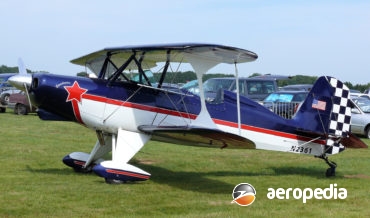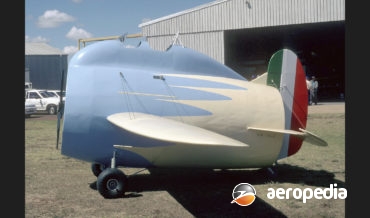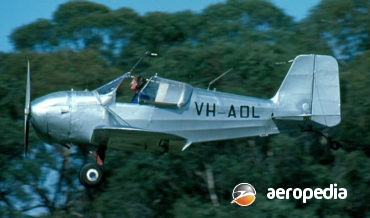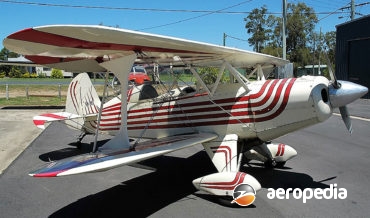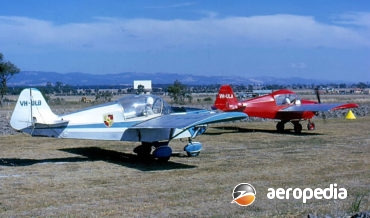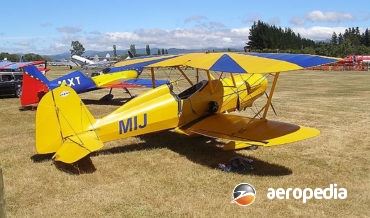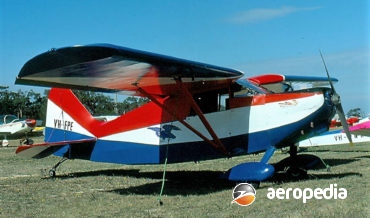All Contents
Contents
The Sea Otter was the last biplane produced by Supermarine and was designed to meet specification S7/38 to replace the Supermarine Walrus in RAF service.
David C. Eyre
- May 19, 2019
In 1941, following the success of the Sea Hurricane, it was decided to build a variant of the Spitfire for operations from British aircraft carriers, and a Mk VB was converted and performed compatibility trials on board HMS Illustrious.
David C. Eyre
- May 19, 2019
Photograph: Supermarine Seagull III A9-6 on Sydney Harbour c 1938 (RAAF Museum) Country of origin: United Kingdom Description: Amphibious reconnaissance biplane Power Plant: One 336 kw (450 hp) Napier Lion twelve-cylinder, broad-arrow, liquid-cooled engine Specifications: Wingspan: 14.0 m (46 ft) Length: 11.27 m (37 ft) Height: 3.65 m (12 ft)
David C. Eyre
- May 19, 2019
In 1929 a specification was issued for a boat-hulled amphibian for shipboard operation to replace the Supermarine Seagull III, a number of which were in service with the RAN on board the seaplane carrier HMAS Albatross.
David C. Eyre
- May 19, 2019
The Southampton was designed as a patrol seaplane to replace the Felixtowe F.5, six aircraft being ordered in 1924 before the prototype was built.
David C. Eyre
- May 19, 2019
In 1936 the British Air Staff drew up plans for the development of a series of twin-engine aircraft which culminated in the Whitley, Hampden and Wellington medium bombers.
David C. Eyre
- May 19, 2019
The Sopwith Pup was one of the most successful aeroplanes of the World War I era, having aesthetic appeal and delightful handling qualities.
David C. Eyre
- May 19, 2019
The S-211 was designed in Italy by SIAI marchetti to meet a need for a cheap-to-buy and operate light jet military trainer which could be used for some of the primary training introduction phase.
David C. Eyre
- May 19, 2019
Designed by Herbert Smith, chief designer of the Sopwith Company, as a replacement for the Camel, the 7F.1 Snipe first appeared in mid 1917.
David C. Eyre
- May 19, 2019
Siemens-Schuckertwerke was one of a number of branches of the Siemens Electrical firm, the company founded in 1847 by Werner Von Siemens and Johann Halske.
David C. Eyre
- May 19, 2019
The Tabloid was one of the outstanding aeroplanes produced in Great Britain before the beginning of World War I and, in the hands of Australian born test pilot Harry Hawker, caused a sensation at Hendon on 29 November 1913 when first demonstrated to the public.
David C. Eyre
- May 19, 2019
The MH-60, initially known as the LAMPS Mark II Block II Upgrade when development commenced in 1993, is a multi mission helicopter aimed at service with naval forces on board ships and on land.
David C. Eyre
- May 19, 2019
In order to design an aircraft that was superior to any produced in Germany, the design team at Sopwith in early 1916 designed a triplane, this machine having three narrow chord wings but the wing area giving plenty of lift.
David C. Eyre
- May 19, 2019
The Sikorsky S-70 series was designed to meet a requirement of the US Army for a utility tactical transport aircraft system (UTTAS), winning a contest in 1976 against a design from Boeing Vertol.
David C. Eyre
- May 19, 2019
The Super Frelon originated from two prototypes of the SA 3200 Frelon [Hornet], the first of which was flown for the first time on 10 June 1959.
David C. Eyre
- May 19, 2019
In February 1978 a contract was signed by Sikorsky to build a series of helicopters to meet the US Navy’s LAMPS (Light Airborne Multi-Purpose system) helicopter requirement, the type being designed to fulfil both the anti-submarine warfare role, and the anti-ship surveillance and targeting role.
David C. Eyre
- May 19, 2019
The G-2A Galeb (Seagull) was the first indigenous jet-powered military trainer designed and placed in production in Yugoslavia.
David C. Eyre
- May 19, 2019
The SM.79 series was one of the most successful Italian bombers of World War II, being a three-engine monoplane which was noted for its high wing loading, and most aircraft delivered to the Italian Air Force having the Alfa Romeo 126 RC 34 engine, which was a Bristol Pegasus built
David C. Eyre
- May 19, 2019
The Sopwith 1½ strutter was the first Sopwith aircraft to achieve widespread use as a fighting aeroplane.
David C. Eyre
- May 19, 2019
The SB-9 Stormer is a development of the Company’s Seeker and Sentinel series and is designed to offer a cost-effective, fixed-wing alternative to the military helicopters in operations with air arms around the world, particularly in hostile environments.
David C. Eyre
- May 19, 2019
The Sopwith 3F.2 Buffalo was an armoured two-seat aircraft designed specifically for low-level observation where it regularly became the subject of ground fire, and many crews were in danger and suffered many casualties amongst pilots and observers.
David C. Eyre
- May 19, 2019
The Jaguar was the culmination of an agreement between the United Kingdom and France to develop a ground attack aircraft which could also be sold to foreign services.
David C. Eyre
- May 19, 2019
The Baby was a development of the Schneider, being a twin float seaplane built for the Royal Naval Air Service.
David C. Eyre
- May 19, 2019
The Singapore, the last biplane flying-boat built by Short, was designed for the RAF as a long-range general reconnaissance biplane, the first Singapore I (N179) flying in 1926, this aircraft being fitted with two 597 kw (800-hp) Rolls Royce H-10 engines.
David C. Eyre
- May 19, 2019
One of the most successful and popular single-seat fighter scouts of World War I, the Camel was an ideal vehicle for those pilots who mastered its potent peculiarities, being ideal for aerobatics and dog fighting;but it was also a vicious machine, in fact a potential deathtrap to those who did
David C. Eyre
- May 19, 2019
The London was built to a British Air Ministry specification for a general purpose coastal patrol flying boat of robust but simple construction.
David C. Eyre
- May 19, 2019
In 1931 Richard Sutton, a member of the Queensland Aero Club, indicated an interest in building an aircraft of his own design.
David C. Eyre
- May 8, 2019
The Merlin III is an eight/eleven seat executive transport designed by Ed Swearingen to offer an aircraft which can travel almost at jet speeds whilst consuming less than half the fuel that a jet business aircraft would require for the same distance.
David C. Eyre
- May 8, 2019
The Swearingen series of aircraft achieved prominence when a Merlin III won the 9,414 km (5,851 miles) trans-Atlantic London – Victoria (British Colombia) Air Race in 1971.
David C. Eyre
- May 8, 2019
Designed by Edward J Swearingen of San Antonio, Texas, the SX-300, when it was released, was described as the ultimate kit-built aircraft, being the fastest, the most expensive and the most complex to build.
David C. Eyre
- May 8, 2019
The Syndetta is a single-seat ultra-light aircraft of tubular steel construction with fabric covering designed and built by Joseph Kunovsky of Winston Hills, a suburb of Sydney, in the 1990s.
David C. Eyre
- May 8, 2019
The Stolp SA-100 Starduster was designed by Louis Stolp in the United States as a single-seat light sporting biplane and was aimed at the popular sport aviation market in America at that time.
David C. Eyre
- May 8, 2019
The Starduster Too was designed by Louis Stolp and George Adamas for cross-country flying with an open cockpit and has been marketed by the Stolp Starduster Corp of Oroville, California, as a open sports plane for the amateur constructor.
David C. Eyre
- May 8, 2019
In about 1932 an unusual aircraft was designed by Italy in Mr Luigi Stipa and built by Caproni, at one stage being claimed to be the first Italian jet-aircraft to fly.
David C. Eyre
- May 8, 2019
The SA-500, sometimes known as the Starlet, or the Sprite, is built and marketed by Stolp Starduster Corp in Oroville, California.
David C. Eyre
- May 8, 2019
The prototype of the Playboy, the SA-3A, was designed by the well-known American light aircraft designer, Ray Stits.
David C. Eyre
- May 8, 2019
The Acroduster Too is one of a series of light sporting aircraft produced by Stolp Starduster Corp of Oroville, California and is a fully aerobatic two-seat aircraft stressed to +9 and -9 G.
David C. Eyre
- May 8, 2019
The Stits SA-5A of early 1955 was the first of the Flut-R-Bug series, this being a single-engine single-seat sporting aircraft designed around a converted Volkswagen four-cylinder powerplant.
David C. Eyre
- May 8, 2019
In 1957 Louis Stolp and George Adams designed and built a light single-seat sporting biplane known as the Starduster, and subsequently marketed plans, components and basic materials to amateur constructors.
David C. Eyre
- May 8, 2019
The first aircraft in the Skycoupe series, the SA-7, was not originally planned for production, but interest in the aircraft forced the designer, Ray Stits, to revise his plans.
David C. Eyre
- May 8, 2019
Recent Comments
Archives
Categories
- No categories
Categories
- No categories
Latest Posts
Newsletter

